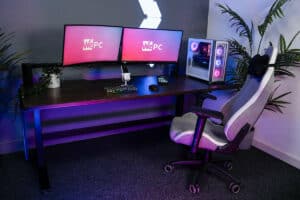Best drone for photography 2023 – DJI, FIMI, and more
Up the cinematic quality of your shots with the best drones for photography in 2024
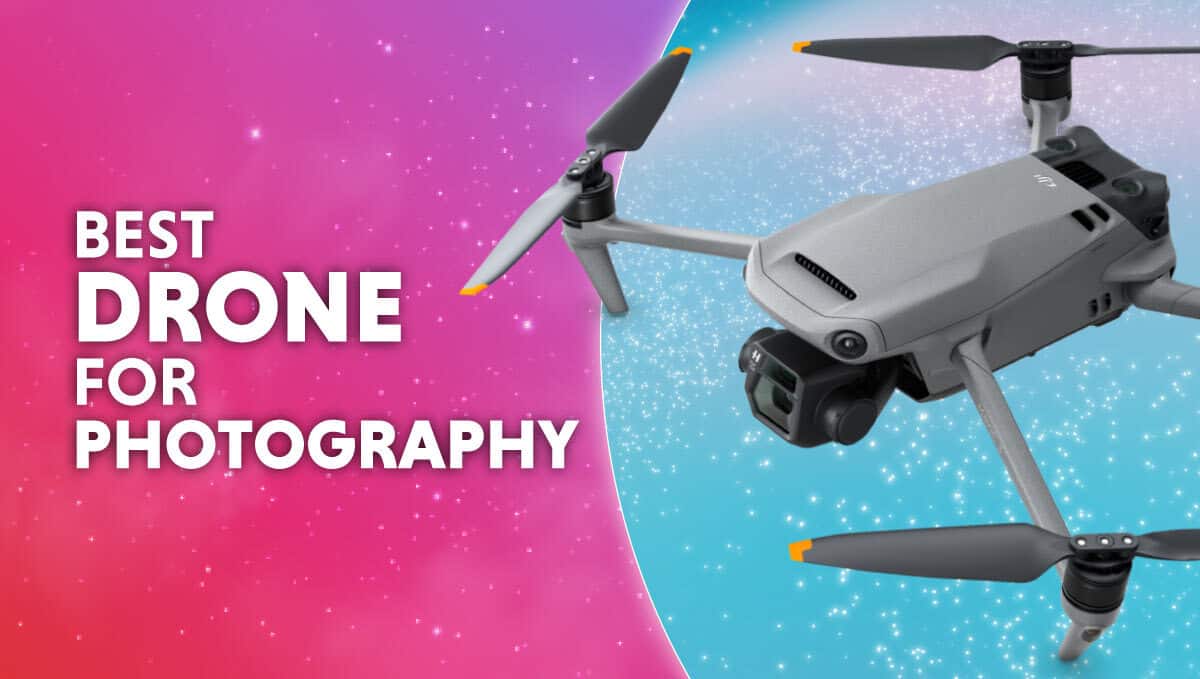
WePC is reader-supported. When you buy through links on our site, we may earn an affiliate commission. Prices subject to change. Learn more
Drones make for powerful photography tools as they allow for angles you wouldn’t otherwise have access to, so let’s have a look at the best drone for photography in 2024, as it might just change your photography game. Given that the holiday period is fast approaching, it’s worth keeping some of these in mind for gifts too.
People have been strapping cameras to airborne vehicles for as long as both have existed, but there was always a limit to what you could do due to the weight of cameras.
Previously, this necessitated the use of a helicopter, but now good quality photos and video can be captured from cameras that can fit in the palm of the hand.
Best drone for photography 2023: products at a glance
DJI Inspire 2
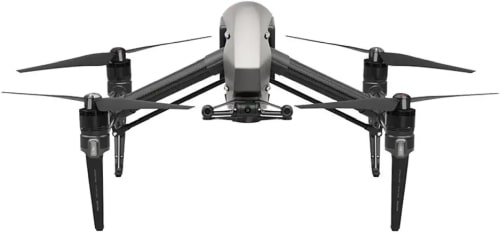
Weight
3.44kg/7.58 lbs
Flight time
Up to 27 mins
Top speed
94kph/58mph
Range
7km/4.3 miles
Camera
Compatible with any 5.2k gimbal cameras
DJI Mavic 3 Fly More Combo
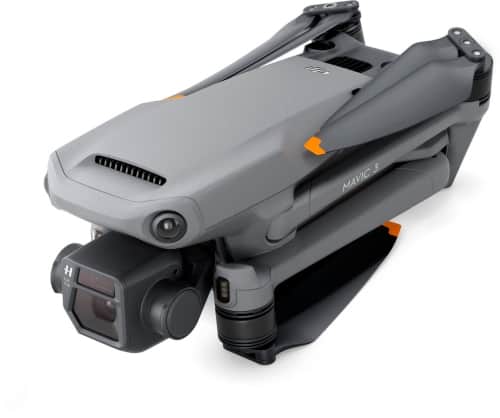
Weight
899g/1.98lbs
Flight time
46 mins
Top speed
98kph/42mph
Range
30km
Camera
Hasselblad 4/3 CMOS, up to 200FPS, 4K
DJI Mini SE
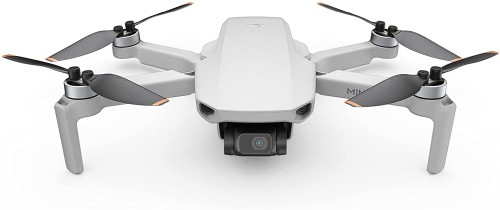
Weight
249g/0.54lbs
Flight time
30 mins
Top speed
46kph/29mph
Range
2.5km
Camera
12 MP CMOS, 2.7K, up to 60FPS
FIMI X8SE V2
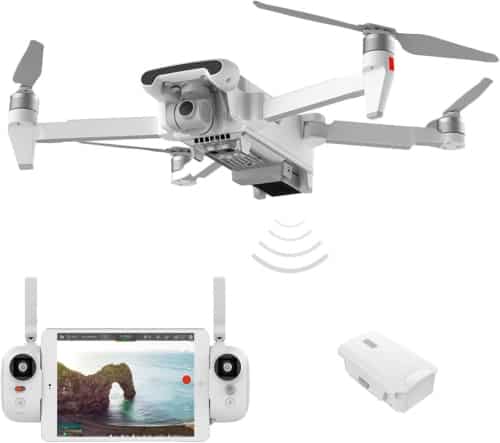
Weight
768g/1.69lbs
Flight time
35 mins
Top speed
40mph/64kph
Range
10km
Camera
1/2″ CMOS sensor, 4K, 60FPS
Snaptain SP7100 with controller
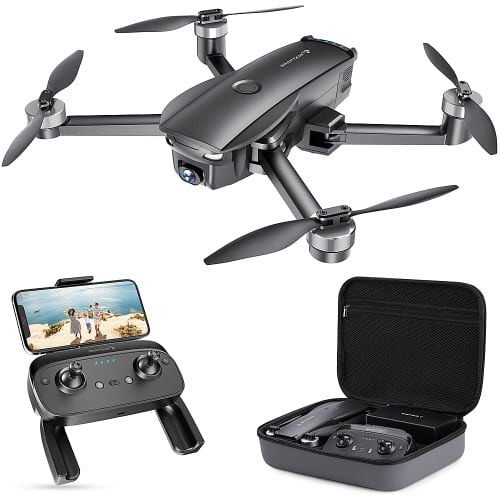
Weight
1.56kg/3.45lbs
Flight time
26 mins
Top speed
Not published
Range
0.5km
Camera
4K UHD camera
This means that a humble and relatively inexpensive unmanned drone is now fully capable of lifting a camera hundreds of feet into the air, allowing for creative possibilities you previously need a Christopher Nolan-sized budget for.
If you fancy a more performance-oriented machine, take a look at the best FPV drone 2023, or if you’re on a tighter budget, the best Drone under $200 might be able to offer a more accessible route.
Best drone for photography 2023: our top picks
Best drone for photography 2023: reviews
So, now we’ve established what needs to be kept in mind, let’s get to the good stuff. All them drones.
DJI Inspire 2

Weight
3.44kg/7.58 lbs
Flight time
Up to 27 mins
Top speed
94kph/58mph
Range
7km/4.3 miles
Camera
Compatible with any 5.2k gimbal cameras
- The most capable camera drone we know of
- Used on hollywood movies
- Industry-leading range
- Has a max take-off weight of 9.37lbs/4.25kg
- A lot of setup required
Now, this is the big daddy. Genuine bona fide top-tier filmmaking equipment. With the ever-growing capability of drones and the ever-shrinking sizes and weights of cameras, you can now get full-on Hollywood-quality imagery from something bolted to the underside of a remote control drone.
This is the case with the Inspire 2, the current jewel of DJI’s crown. It’s also the most expensive drone they make unless you include the admittedly cool-looking AGRAS T30, which is made from remote crop dusting.
But we’re here for photography, so let’s talk cameras. DJI, in addition to drones, makes their own camera systems too. These are serious filmmaking tools too, with the current top-dog Zenmuse X7 packing a super-35 sensor, 6k resolution, and 14 stops of dynamic range.
This would be impressive for a normal camera, let alone one that lives on a gimbal slung underneath a drone. Like most pro camera systems, it doesn’t come with a lens, but DJI offers four compatible sets of glass to cover most filmmakers’ needs.
If you’re looking for a flight system that can handle any aerial filmmaking you through at it, you can’t get better than the DJI Inspire 2, as far as we know, at least.
DJI Mavic 3 Fly More Combo

Weight
899g/1.98lbs
Flight time
46 mins
Top speed
98kph/42mph
Range
30km
Camera
Hasselblad 4/3 CMOS, up to 200FPS, 4K
Aside from building a bespoke solution that can carry a full-on IMAX camera, the DJI Mavic 3 is currently the undisputed champ of drones for photography that a normal person might be able to afford.
Aside from the inarguable pedigree of DJI, we also get the benefit of a genuine Hasselblad camera mounted on a gimbal, which is a big deal for a few reasons, and interesting for a few more.
Hasselblad is a manufacturer of high-performance, general-use photography and cinema cameras, in fact, their cameras were specifically chosen for the American Space program, and a total of 12 Hasselblad cameras remain on the surface of the moon. The film magazines were removed and kept, while the cameras themselves were discarded to save fuel for the return trip home.
That says it all, really. If the company you get your cameras from has made them work in the vacuum of space, they’ll be able to handle zipping around on a drone.
DJI Mini SE

Weight
249g/0.54lbs
Flight time
30 mins
Top speed
46kph/29mph
Range
2.5km
Camera
12 MP CMOS, 2.7K, up to 60FPS
But what if you don’t want to spend 5 months’ worth of rent money on a drone? Well, luckily DJI has your back all the way down in this price bracket too, with the DJI Mini SE.
So far as we can tell, DJI has distilled all the most important features of the best drones for photography down into the DJI SE Mini. Of course, at this price point, it doesn’t retain the sheer quality of the big boys, like the Mavic 3.
However, it retains the good stuff so it’s got everything a budding to midweight photographer needs to take their art to new heights (lmao).
It’s worth noting here that somehow, the irritating trend of not including chargers that we got from Apple (Thanks, boys), has made it to drones too.
So if you buy this drone, make sure to grab a compatible charger too, lest you unpack the shiny new DJI Mini SE and be left woefully grounded.
FIMI X8SE V2

Weight
768g/1.69lbs
Flight time
35 mins
Top speed
40mph/64kph
Range
10km
Camera
1/2″ CMOS sensor, 4K, 60FPS
We can’t just recommend DJI drones here. Luckily, in response to their meteoric rise in popularity and critical acclaim by hobbyists and professionals alike, other companies have cropped up to steal a share of the pie.
One such company is FIMI and they have done a stunning job of making their drones competitive with DJI, both in terms of pricing and overall performance.
The FIMI X8SE V2 utilizes a Sony 1/2″ CMOS sensor capable of 48MP photos. Due to its origins in CCTV, it’ll keep the footage of pictures crystal clear with minimal graininess.
Additionally, you can get a loudspeaker attachment. The true purpose of this is for either communication or emergency use, but we think it’d be more fun to use it to shout obscenities at people without the risk of being punched.
Snaptain SP7100 with controller

Weight
1.56kg/3.45lbs
Flight time
26 mins
Top speed
Not published
Range
0.5km
Camera
4K UHD camera
The Snaptain SP7100 is another more accessible drone, equalling the DJI Mini SE’s $300 price point, and it’s got a lot going for it, aside from the amusing company name.
Essentially, it’s specced very competitively for the price, including all the essentials and a few creature comforts that will help elevate (haha) the drone photography experience.
Our favorite is the ‘Decide your own flight path’ function. Essentially, you can use the companion ‘Snaptain Mate’ app to draw a line from point to point. The Drone will then follow a path between these points, taking photos or recording videos as you see fit.
Additionally, the drone and controller are fully collapsable, and given that the controller utilizes your phone instead of its own screen, this allows the overall package to pack down into a remarkably compact form factor.
DJI Avata
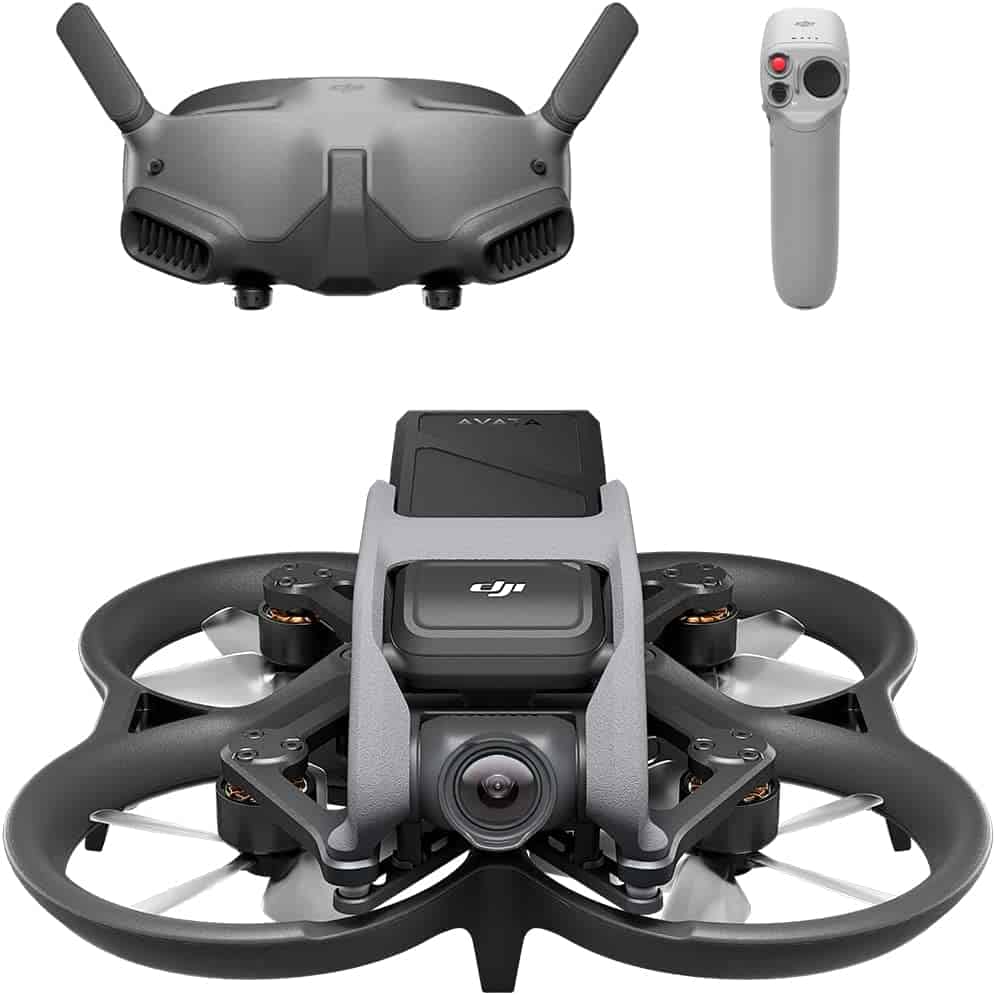
Weight
0.9lbs/410g
Flight time
18 mins
Top speed
96kph/60mph
Range
11.6km
Camera
48MP 155-degree FOV, 4k @60fps
The recently released DJI Avata might not be quite as comprehensive as the DJI Mavic series, but as it’s the latest drone in their lineup, it benefits from being on the cutting edge of camera technology specifically designed for crashing into trees.
This means that DJI has packed a whole lot of features and technology into the pint-sized drone, and the camera is especially impressive given the diminutive size.
We get a stunningly wide 155-degree FOV and a camera capable of full 4K resolution at 60FPS. It’s also capable of 48MP photography, meaning that unless you strap a DSLR camera to a toy helicopter, this is among the highest quality FPV drone camera.
iFlight Nazgul 5
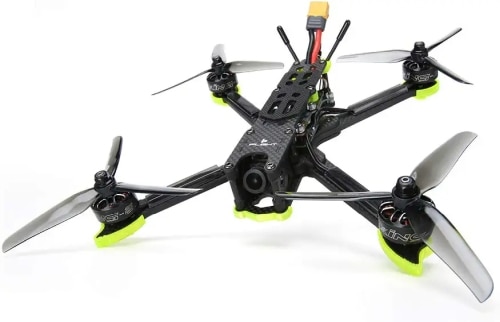
Weight
392g/0.86lbs (Without battery)
Flight time
Depends on battery
Top speed
128kph/80mph
Range
100m
Camera
GoPro (Sold separately)
What the hell? A racing drone for photography? How could some flippy little boy be the best drone for photography? Calm down, reader, we’ll explain.
Well, this guy can pull double duty as a racing drone and a photography drone. Honestly, you’ll be surprised at the quality of tiny cameras these days. Especially GoPros.
This means that, with some practice, you could be the fastest photographer in the west. Although given the lack of stability, this setup might be more suited to videography.
Things to consider when buying the best drone for photography
Before launching onto the product page and dropping big bucks deluxe on the best drone for photography, it’s worth taking a moment and thinking about what you need and what you don’t.
Price
Depending on whether photography is a business or a hobby for you, this consideration takes on a considerably different meaning.
If you’re a professional photographer or even use photography to make a little extra money on the side, you might be able to write off a portion of your drone purchase and get it back with your tax rebate.
However, it’s still worth keeping in mind, as spending thousands and thousands on a photography drone when photography is simply your weekend hobby might not be a shrewd investment.
Additionally, drones can very quickly go from pristine technological marvels with untold potential to smoking wrecks stuck 150ft up a tree in less than a second, so consider your piloting ability and adjust your budget accordingly.
Flight time
Drones are impressive, compact, and technologically advanced pieces of kit, but the battery life still sucks. This means you’ll scarcely get more than 20-minutes of flight time before having to land and swap the battery out if you have some extra batteries around.
So, keep in mind the type of photography you’re going to be doing, and, more pertinently, the locations in which you’ll be shooting. If you can’t take off close to the subject that you’re shooting, you’ll have less time to make the shot before having to return to base.
Aside from concerns of distance, longer flight times just make life easier with less stopping and starting. It’ll also shorter the duration of your photoshoots considerably.
Bear in mind here that lighter drones generally have longer flight times, but often have cameras of lesser quality and less capacity for holding better aftermarket cameras.
The controller
This is the second most important area of consideration aside from the Drone itself. After all, what good is a $1000+ drone that crashes every time you fly it because you piloting it with a Madcatz-looking, younger brother-tier controller?
This is a more complex piece of kit than your typical run-of-the-mill PS5 controller as piloting a drone, or any aircraft for that matter is not an easy task.
It requires simultaneous modulation of several different inputs and it takes a lot of practice, so getting a really good one is a great shout to make the learning curve seem that little bit less steep.
Additionally, you want a controller with sufficient range if you’re wanting to shoot in more remote locations or to get closer to the top of large objects like buildings or cliffs.
Whilst some lightweight options will get you to connect your smartphone to use as the controller or part of it. Whilst there are even potential ones with a first person view with a VR headset to put it in frame.
Modes
It might sound a bit vague, but what we mean by this is different flight modes, that change the characteristics of the photography drone in flight.
This is particularly important for the beginners among you, some of the best drones come with a training mode that limits the top speed, altitude, and range.
These modes typically allow you to slowly hone your skills, slowly removing safeguards. Most drones then come with a ‘manual’ or ‘unlocked’ mode that allows you to fully push the drone to its limits.
Some of the best camera drone options offer intelligent flight modes to help you with that especially for obstacle avoidance as you don’t want to break it straight away.
Camera and mount
Most photography drones come with a camera irremovably integrated into a gimbal of some sort, which is annoying as it makes upgrading the camera either a massive chore or entirely impossible altogether.
So, there are two main things to keep in mind when talking about drone cameras: camera quality, and upgradeability. Videographers will know what they are after. There are options where you can get excellent image quality, good aperture, and potentially HDR as well.
However, some Drones allow for an additional camera to be mounted, for example, a GoPro. This will be listed in the specs and features section.
Another thing to consider is the gimbal, specifically, how many axis’ it has. This will directly affect how level the camera can stay. 3 Axis is the best here as it can compensate for the drone’s tilting, rolling, and yawing, and offer good image stability for the high-quality camera. Which will definitely improve the aerial photography you’re capturing.
Drone registration
The Federal Aviation Administration (FAA) in the US does require all drones above a certain weight class to be registered. The pilots require any drone above 0.55 lbs (250 grams) to be registered and are likely to have limits on where they can be flown as well. Different governments are likely to have a similar need as well.
Drone photography FAQs
If you’ve landed on this page, there’s a good chance that you’re new to this hobby. With that in mind, we’ve decided to collate and answer some of the queries posited most often.
What makes good drone photography?
The same qualities that make for a good photo. This means you should be paying attention to the normal rules of photography. Starting with The Rule of Thirds will put you in the right direction.
Is drone photography difficult?
Yes, trying to simultaneously control a drone while composing a good shot isn’t easy, and will take a lot of practice, plenty of crap photos, and even more crashes.
What DJI drone takes the best pictures?
The DJI Inspire 2 is the best DJI drone for photography at present. This is because it of its dramatically strong gimbal, which allows it to carry and control larger, more comprehensive camera systems, such as the 6K CinemaDNG, also by DJI.
How much does a good photography drone cost?
Professional filmmaking drones can run into the tens of thousands, however, a decent drone with a decent camera can be had for not much more than a few hundred dollars. The more you put into this hobby, the more you get out.
Can you make money doing drone photography?
Yes. However, you’ll have to invest a lot of time and perhaps some money if you’re aiming for it to be a stream of sustainable income.


